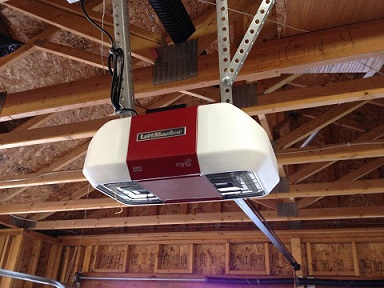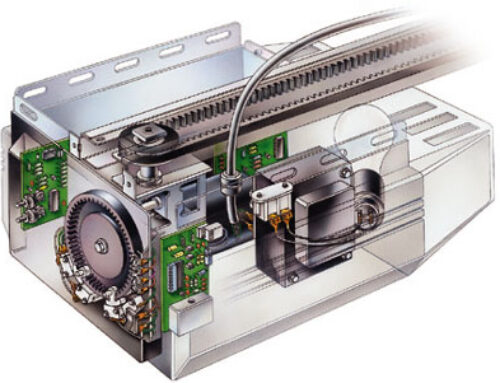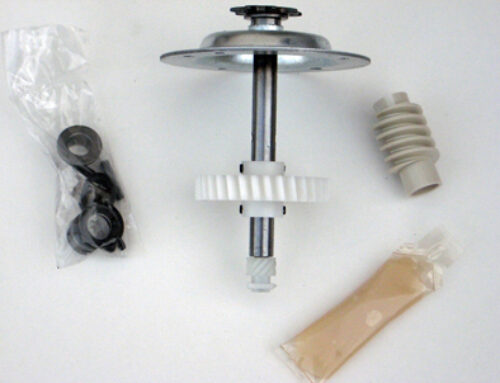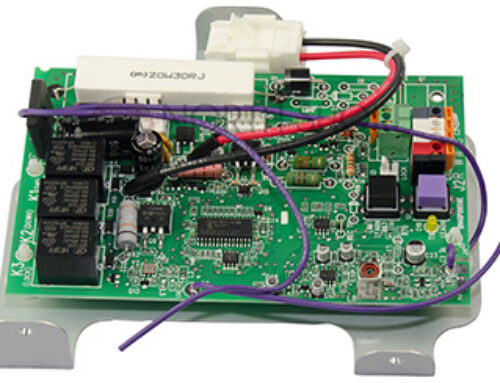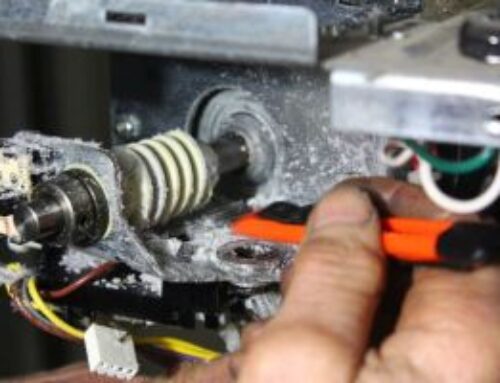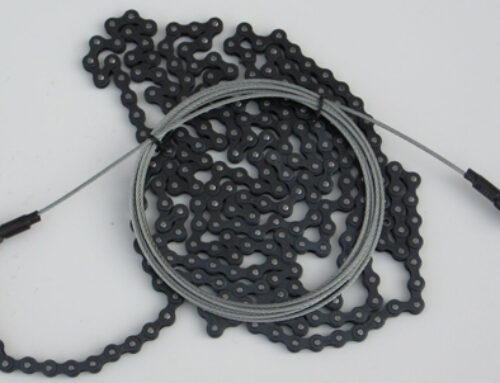How to Install a Garage door opener.
The following steps are for the installation of a garage door opener that has a belt drive system. The belt drive is normally quieter than the chain drive. It’s highly recommended to buy the belt drive though it costs a few extra dollars just for the quietness when the garage door opens in the morning. Make sure you note the following tips:
➢ Make sure the door parts are working
➢ Check the door balance
➢ Choose the right opener
➢ Set the opener on a ladder for easier installation
➢ Buy heavy-duty angle iron
➢ Replace all the components
➢ Check the door’s opening force
➢ Fine-tune the opening and closing force
➢ Use bulbs that handle vibration
➢ Fix a reversing door
The installation process will take a little bit of time, for a first timer it will take about 3 hours. Older model chain-driven garage door openers vibrate a lot and create a racket when opening and closing. There’s no need to live with this nuisance as you can install your own new garage door opener in a weekend.
To prevent possible serious or death:
➢ Always call a trained door system technician if your garage door binds, sticks, or is out of balance. An unbalanced garage door may not reverse when required.
➢ Never try to loosen, move or adjust garage door, door springs, cables, pulleys, brackets or their hardware, all of which are under extreme tension.
➢ Disable all locks and remove all ropes connected to the garage door before installing and operating the garage door opener to avoid entanglement.
To prevent damage to garage door and opener:
➢ Always disable locks before installing and operating the opener.
➢ Only operate the garage door opener at 120V, 60Hz to avoid malfunction and damage
You don’t need anything more than a socket wrench and drill/driver to remove the old opener and install the new one. Follow the manufacturer’s instructions carefully and consider building or buying a smartphone enabled garage opener. This majorly depends on the amount of extra stuff you need to do to get ready. To get ready depends a little bit on the type of garage door and garage you have: if your garage has got a finished ceiling, a plug in a couple of feet, getting some blocking up in the ceiling to hold the garage opener to, screwing the block into the rafters above etc. When you buy the garage door opener, it’s not going to come with the plate, so you will need to buy an operator plate to fit on the garage door you have. You may need an extension kit if your door is higher than the normal residential garage door.
You will need the following tools:
• 2 safety sensors with attached carriage bolts
• 2 brackets
• 2 wing nuts
• Wire stripper
• Insulated staples
• Staple gun
• Ladder
• Flat-head screwdriver
• Clamps
• Tape measure
• Drill/driver, cordless
• Hacksaw
• Wrench set
Follow the steps below when installing a belt drive garage door opener:
➢ Start by installing the operating plate, after finding the center mark of the door. Use a tape measure to do the measuring. Make sure you mark where the center of the door is. The operating plate will have a notch at the bottom in case you have a hinge on the door. Wind the center of the bracket to the center of the door thatyou have just marked. Just snuggle up the screws. The bracket has 5 screws make sure you fasten all of them.
➢ Try to determine the height of the header bracket. You will need to continue the center line up. The other thing you need to determine for the opener is the highest point of travel of the top of the garage door when the door is opening. Pull the door open by hand and determine by eye, when it gets to the point where the top edge of the door is as high as it can ever get when it’s opening. Mark that point on the wall. You should be 2 inches above that. From that mark, make another two inches above that that will be the position of your bracket.
➢ Pre drill a couple of holes on the solid blocking block. If you already have a garage door mounted, you will have a block on the header part of the garage door. Most openers suggest that one should mount the solid blocking of the garage door.
➢ Predrill a couple of holes in the solid blocking wood.
➢ Assemble the rail system for the opener. Take the extension piece out of the package. Refer to the manufacturer’s instruction manual when checking the holes in the extension piece so that you make sure you are getting the piece in the right direction. The pieces fit together.
➢ At the very end of the piece, attach a bracket that will be used to attach the extension piece to the opener.
➢ Mount the rail to the motor housing. Attach the bracket to the motor housing of the garage door opener.
➢ Start assembling some of the other pieces into the track. Take the mechanism that slides back and forth on the rail that the door is attached to. Slid it onto the rail. Stick a screw driver so that it doesn’t slide back and forth during the installation process.
➢ Take the extended belt, the end of the belt with a hook on it, pass it through the large slot on the other end of the rail track. Next, take the bolt and coil and fix it on the rail track. Finger tightens the lock bolt.
➢ Take the stud bolt that goes into the very last hole on the track. Place it on the track and use the lock bolt to fasten it. If anything should malfunction on the track, it will hit the bolt and stop.
➢ You need to bring the belt up and around the sprocket of the motor. Make sure the belt isn’t twisted. Guide the belt on the rail and make sure you keep a little tension on it, and then wrap it around the sprocket.
➢ Use the tightening mechanism for the belt itself. Take the chain link at the end of the belt and pop it through the hole in the carriage, then fit it through the hole in the rail. Make sure you get the tightening mechanism in the right direction. Finger tighten the nut. Give the mechanism a quarter turn so that it releases the safety on the spring that tensions the belt. The systems could be different, make sure you refer to the user manual for more guidance.
➢ Cover the top plate of the motor housing unit.
➢ Using a ladder, get the motor housing positioned. Take the pin and pop it up there. Install the rail on the upper bracket that had been fastened on the solid block. At this point it’s highly recommended that you could get an assistant to help you.
➢ Next is to determine the space needed between the door and the upper section of the garage door. Make sure you don’t have too much space; it’s recommended that you stay about two inches of the door. Trip the safety to release the runner, so that when the door opens, it doesn’t hit it.
➢ Temporarily suspend the opener at a higher height until you can get the door open.
➢ Open the garage door. Check and see how leveled the track is.
➢ The opener will come with right angled metal bars that can be used to support the motor on the ceiling. The metal bars are very useful in mounting.
➢ Align the motoring unit with the bracket that had been mounted on the header of the garage door. This will make sure the garage door opener is in the center.
➢ Mount the brackets on to the opener. Use the group of holes on the motoring unit; pick the holes that are closest to the wooden support block. If you have a finished ceiling you will need another supporting bracket installed across the ceiling. Make sure the brackets are installed in a 90 degree angle as this will give the motoring unit more support. Double check that the unit is in aligns before installing the supporting brackets.
➢ Tighten the bolts on the motoring unit. Do not plug in the power cable yet, till you have installed all the sensors, buttons, wires etc.
➢ When you have the extra extension on the rail because you had oversized the door, put an angel piece of bracing as well.
➢ Next you will need to mount a bracket through the door. It’s recommended that the bracket is four inches from the header of the garage door. The bracket has directional instructions. Pre drill the holes on the heavier clip. Make sure you have your safety glasses on. Mount the bracket with the two bolts that come with it.
➢ Mount the arm, by lightning two holes on the arm and the holes on the bracket. Use the bolts to fasten the arm. Make sure the piece doesn’t stick out, if it does just cut it off.
➢ Next is to install an emergency handle using the rope that is provided in the kit. Make sure the handle is at a good height, you should be able to reach it with ease. Cut the excess rope on the emergency handle.
➢ You now need to install the electrical components. Garage door openers are a fast and safe way to access the garage area, but only when they include the proper safety features. Manufacturers now supply safety sensors with the garage door opener system so the door cannot accidentally crush a person or property; the sensors cut off the closing circuit in the system and force the door to open if it detects an obstruction. Installing the sensors as part of the garage door opener installation requires attention to wiring and adjustments to the devices themselves.
➢ Take the multipurpose bracket that can be snapped on the rail or installed on the wall. It’s recommended not to put the bracket at more than 12 inches. Use the clips to make sure the bracket fits perfectly. Fix the sensors on both sides of the garage door.
➢ Locate the ends of the wiring extending from the safety sensors. Each sensor should have one white and one black and white wire. Pull the wires apart so they are all separated from one another. Strip 7/16 inch of insulation off the tips of each wire with a wire stripper.
➢ Press the safety sensor’s wiring against the garage’s interior wall. Secure it to the wall with insulated staples and a staple gun. Do not pierce the wires with the staples. Repeat with the second safety sensor
➢ Run the sensors’ wiring up along the wall and garage ceiling until it meets the overhead opener motor. Secure the wire against the wall at 12-inch intervals with the insulated staples and staple gun.
➢ Fit the sensor on to the bracket. Do this on both sides of the garage door. The sensors usually have light on them, most of the time if the garage door isn’t functioning it’s because the sensors are not functioning properly. Refer to the instruction manual to understand what the lights on the sensors mean. Their lights should be blinking to indicate that they are not aligned. Slightly adjust the sensor’s position on the track until the lights on each sensor become solid. It may be necessary to adjust both sensors repeatedly until they are properly aligned.
➢ Install the wall button. There will be one wire with a solid color and the other wire with a striped color. Plug the wires into the back of the wall button; refer to the instruction manual as it will indicate where each wire is supposed to be connected. Make sure you don’t damage the circuit board. Tighten the screw up clockwise.
➢ Connect the wires onto the winding board. Refer to the instruction manual on how to install the wires; the wires need to be push installed.
➢ Take the sensor wires and hook them block to block, pair the solid colored wire and the striped colored wire and connect them to the door opener. Make sure you keep the excess wire away from the opener so that they don’t hang.
➢ Cover the motoring board.
➢ Plug the door opener to the power supply. Make sure the power cable is not hanging in the way of the belt.You will notice a hanging wire, don’t tamper with that, it’s the antennae of the opener.
➢ Check the colors on the sensors; make sure that the lights are solid colors of a green and a yellow.
➢ Try opening the garage door. Some adjustments will need to be done to determine how high the door should close all the way and the tension needed on the door. The door will not be able to open all the way because of some adjustments that have not been made.
➢ The adjustments are made to the motoring unit. Use the instruction manual when making the revolutions.
➢ Check the force of the opener; if there is an obstruction the garage door it will shut down to prevent damage. This is also the test for garage door balance.
➢ Open the door half way and then release it. The door should remain in place completely supported by its springs. If the door slowly rises upwards or falls to the floor gently, this is acceptable. If the door slams shut or shoots upward with force, the door is out of balance.
➢ Pull the emergency handle release. Then manually close the garage door. Run the opener through a cycle, the carriage should now operate normally. Close and open the garage door. Check the upward force. Adjust till you find the correct amount of force need to operate the garage door.
➢ Finally make sure you program your remote to your garage door opener. Refer to your instruction manual on how to do this.

